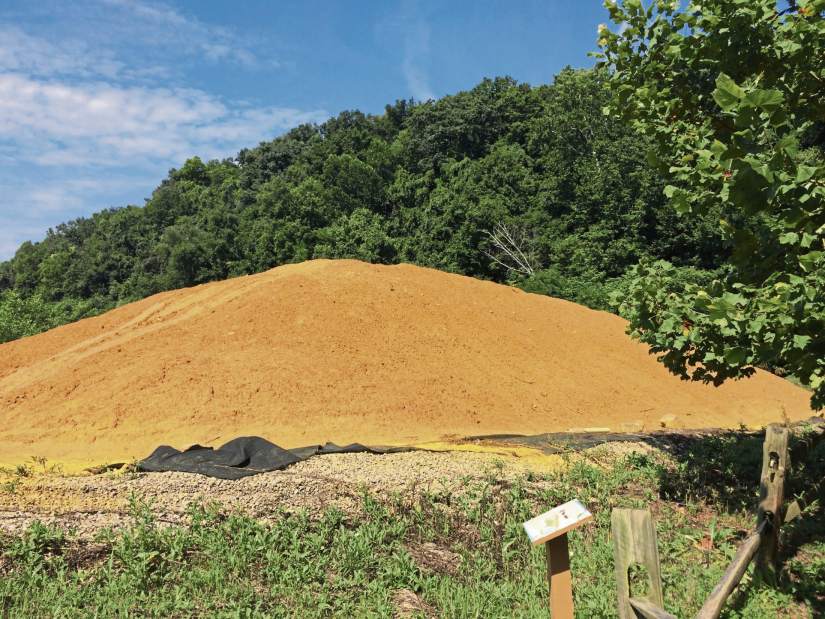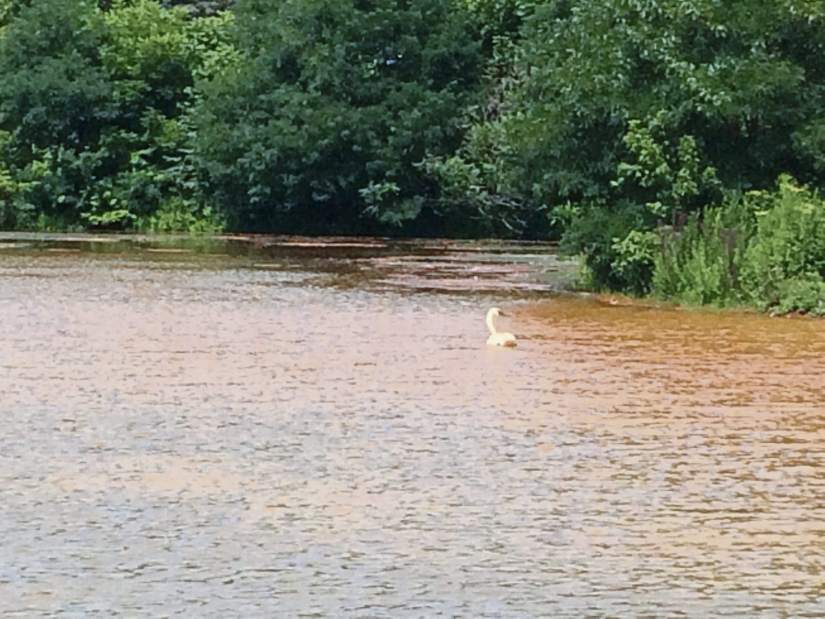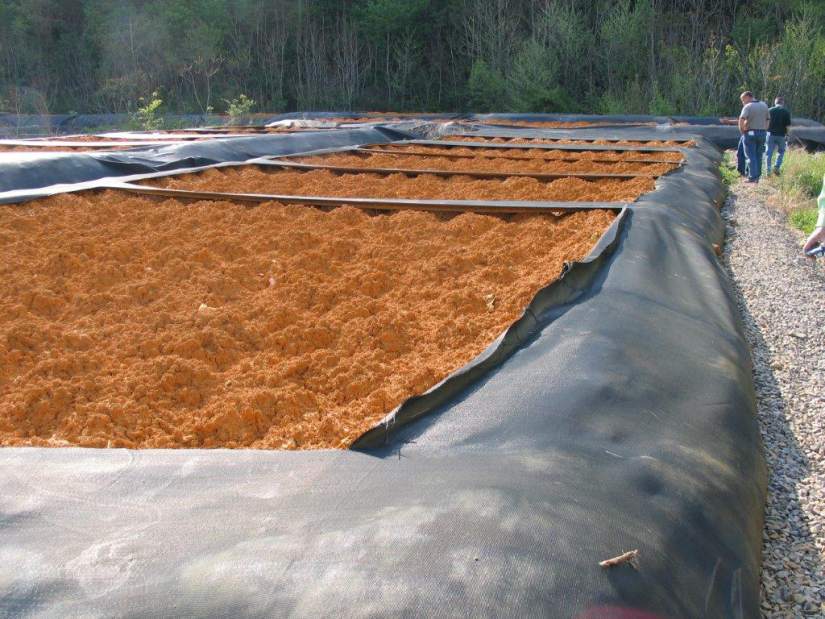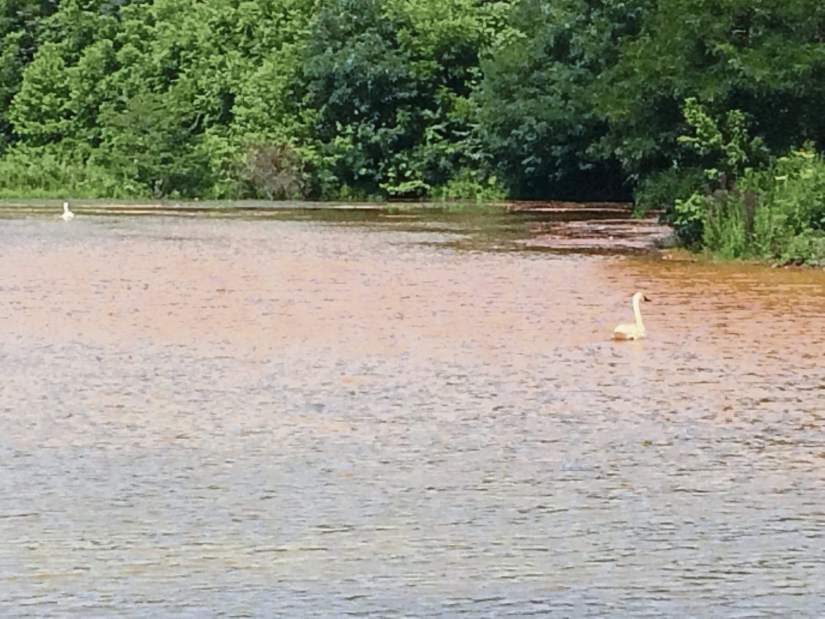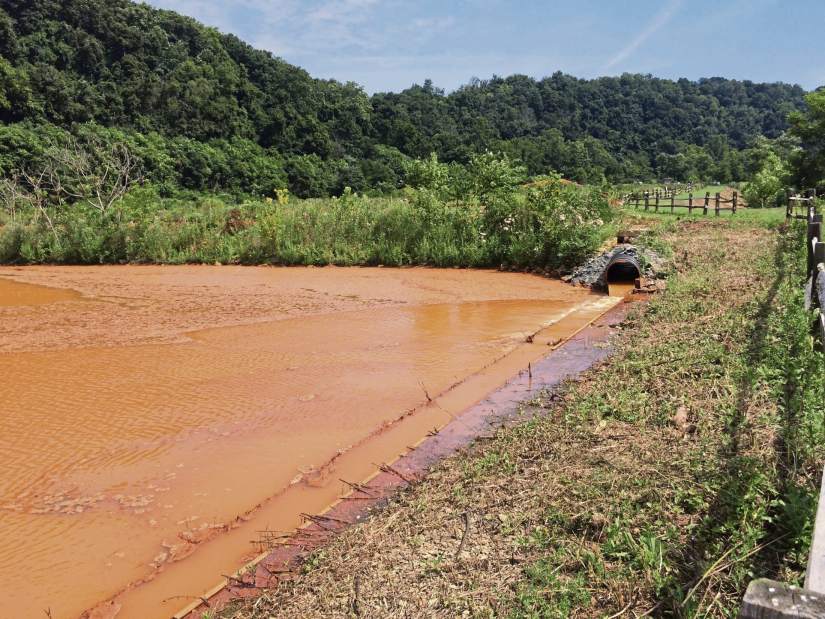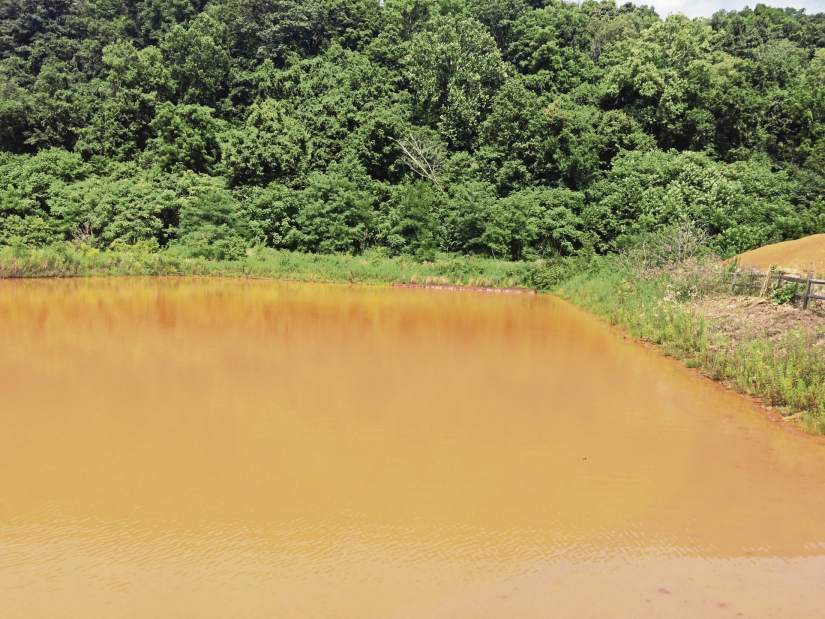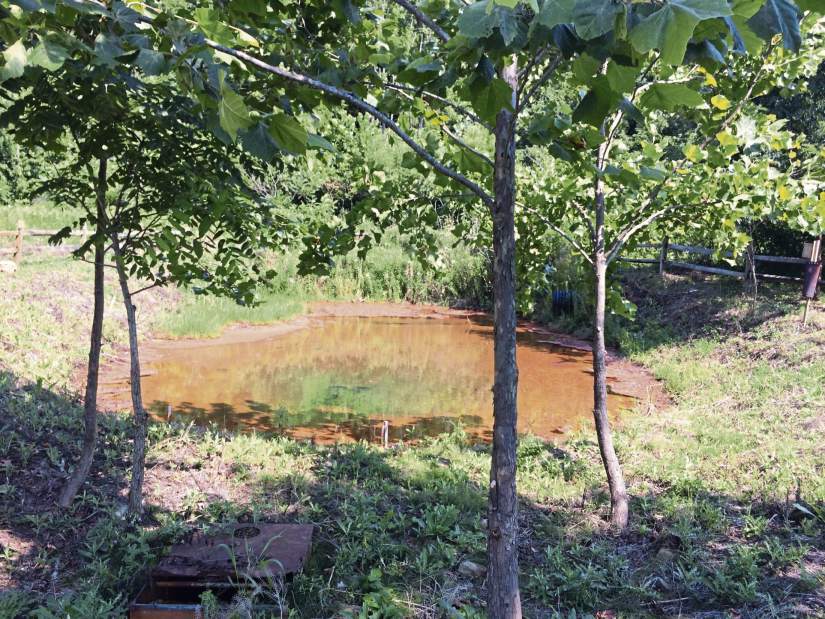Education program set at Lowber mine drainage treatment site
What stands out at the Lowber mine drainage treatment site is what's piled up — a 15-foot-high pyramid of orange-colored iron oxide dredged from settling ponds, just waiting to be bought and used in paints, stains or dyes.
Six settling ponds filled with orangish water and a wetlands work in concert to remove iron oxide and other impurities in the water spewing from the long-abandoned Marchand mine. Those are among the sites visitors will see — perhaps along with the three swans and snapping turtle that frequent the wetlands — at the mine drainage treatment project on Lowber Road in Sewickley during Family Field Day from 10 a.m. to 2 p.m. Tuesday. The event will include environmental nature stations, water testing demonstrations, plant sampling methods, microbiology and kayak and water safety demonstrations.
“We want to bring out the families to learn about the facility ... to achieve a better understand of what's going on down there,” said Tom Keller, executive director of the Sewickley Creek Watershed Association, noting different types of studies conducted by local university students.
The watershed association manages the passive abandoned mine treatment system that uses gravity, rather than pumps, to move water from one pond to the next.
Through the $1.3 million treatment system that was built in 2006, the mine water is purified enough that trout can be stocked in nearby Sewickley Creek, where water from the ponds eventually flows, Keller said. The creek meets the Youghiogheny River at Gratztown, where it no longer leaves an orange plume of pollution.
Keller is quick to point a common misconception about the project: The settling ponds are not treating acid mine drainage because the water, filtered through underground limestone, has made it alkalic.
The association wants to make the 22-acre facility even more family-friendly in the future by creating a walking trail along the rear portion of treatment system, completing a 4,400-foot walking path around the site, Keller said. He envisions a trail with a crushed limestone base, which would cost about $3,000.
There also are plans to construct a 24-foot-by-40-foot pavilion that can be used for meetings and seminars, as well as a site where students can do research next to the ponds, Keller said. The association is seeking grants for that project, which he estimated would cost about $15,000.
As for the pyramid of iron oxide at the site, the association has sold the material to a pigment company, Iron Oxide Recovery Inc. of Mt. Lebanon. But the market for iron oxide has gone soft recently, so the material — which has filled the settling ponds in about 3 1⁄2 years — will remain spread over the association's storage area until the market improves, Keller said.
Joe Napsha is a Tribune-Review staff writer. Reach him at 724-836-5252 or jnapsha@tribweb.com.

